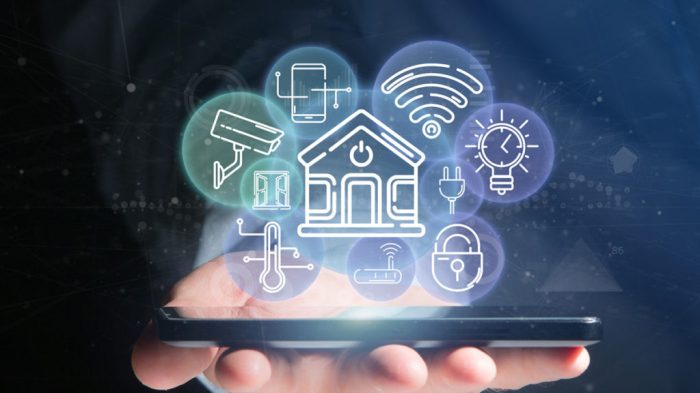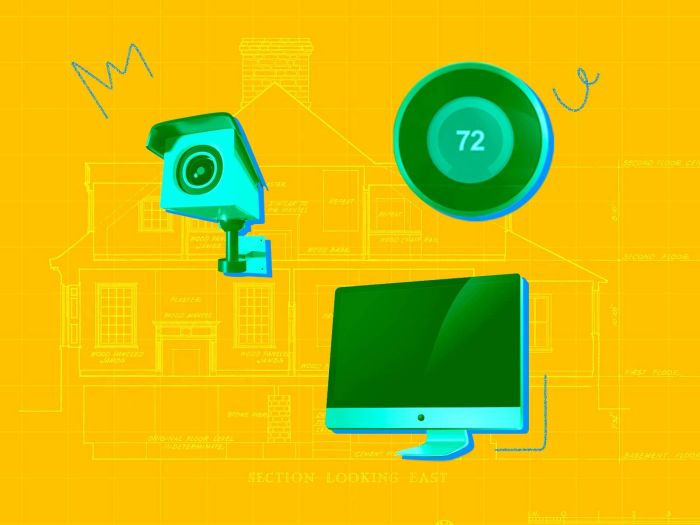How to Secure Your Smart Home From Cyber Threats
Embarking on the journey of safeguarding your smart home from cyber threats, this introduction aims to pique the interest of readers with a blend of information and engagement.
Providing an insightful overview of the risks and vulnerabilities faced by smart homes, this paragraph sets the stage for a comprehensive discussion on securing your connected devices.
Understand the Risks
In today's interconnected world, smart homes are becoming more vulnerable to cyber threats than ever before. It's crucial to understand the risks associated with these devices to protect your home and personal data.
Common Cyber Threats
- Malware Infections: Smart home devices can be infected with malicious software, compromising their functionality and security.
- Phishing Attacks: Cybercriminals may use deceptive emails or messages to trick users into revealing sensitive information.
- Man-in-the-Middle Attacks: Hackers intercept communication between devices and manipulate data exchanged, leading to privacy breaches.
Potential Vulnerabilities
- Weak Passwords: Many smart home devices come with default passwords or use easily guessable ones, making them susceptible to brute-force attacks.
- Outdated Firmware: Failure to update device firmware leaves them exposed to known vulnerabilities that hackers can exploit.
- Lack of Encryption: Devices transmitting data without encryption can be intercepted by cybercriminals, exposing sensitive information.
Consequences of a Cyber Attack
A cyber attack on a smart home can have severe consequences, ranging from invasion of privacy to physical harm:
- Privacy Breaches: Hackers gaining access to cameras or microphones in smart devices can spy on occupants without their knowledge.
- Data Theft: Sensitive information such as personal details, financial data, or login credentials can be stolen and used for malicious purposes.
- Device Manipulation: Cyber attackers can take control of smart devices like thermostats, locks, or alarms, disrupting their normal operation.
Secure Your Wi-Fi Network
When it comes to securing your smart home from cyber threats, one crucial aspect to consider is securing your Wi-Fi network. Your Wi-Fi network serves as the gateway for all your smart devices to connect to the internet, making it a prime target for cyber attacks if not properly secured.
Use Strong Passwords for Your Wi-Fi
- Always change your default Wi-Fi password to a strong and unique one. Avoid using common passwords or easily guessable phrases.
- Include a mix of uppercase and lowercase letters, numbers, and special characters in your Wi-Fi password to make it more secure.
- Regularly update your Wi-Fi password to prevent unauthorized access to your network.
Enable Network Encryption on Your Router
- Enable WPA2 or WPA3 encryption on your router to protect your Wi-Fi network from eavesdropping and unauthorized access.
- Encryption scrambles the data transmitted between your devices and router, making it unreadable to anyone trying to intercept it.
- Avoid using outdated encryption methods like WEP, as they are less secure and easier to crack.
Update Firmware Regularly
Updating firmware on smart devices is crucial to maintaining the security and functionality of your smart home. Firmware updates often include patches for security vulnerabilities, bug fixes, and performance improvements. Neglecting to update firmware can leave your devices vulnerable to cyber threats and compromise the security of your entire smart home network.
Checking and Installing Firmware Updates
- Check for updates: Go to the settings or preferences section of each smart device and look for an option to check for firmware updates. Alternatively, you can visit the manufacturer's website for information on the latest firmware versions.
- Download and install updates: If updates are available, follow the instructions provided to download and install the firmware updates. Make sure to do this regularly to ensure your devices are always up to date with the latest security patches.
Risks of Outdated Firmware
- Security vulnerabilities: Outdated firmware may contain known security vulnerabilities that hackers can exploit to gain unauthorized access to your smart devices and sensitive data.
- Performance issues: Using outdated firmware can lead to performance issues, such as slow response times, connectivity problems, or device malfunctions.
- Compatibility issues: Newer smart home devices and applications may not work properly with outdated firmware, leading to compatibility issues within your smart home ecosystem.
Implement Strong Authentication

Implementing strong authentication measures is crucial to protect your smart home from cyber threats. This includes using unique and robust passwords for all your smart devices and accounts.
Importance of Strong and Unique Passwords
- Choose complex passwords with a combination of letters, numbers, and special characters.
- Avoid using easily guessable information such as birthdays, names, or common words.
- Ensure each device and account has a different password to prevent a single breach compromising all your devices.
- Regularly update your passwords to enhance security.
Benefits of Two-Factor Authentication
- Two-factor authentication adds an extra layer of security by requiring a second form of verification, such as a code sent to your phone.
- Even if someone obtains your password, they would still need the second factor to access your accounts.
- It significantly reduces the risk of unauthorized access to your devices and data.
Tips for Creating Secure Passwords
- Use a passphrase instead of a single word for added security.
- Consider using a password manager to generate and store complex passwords securely.
- Avoid sharing your passwords with others and never write them down in easily accessible places.
- Change default passwords on smart devices immediately after setting them up.
Secure Your Smart Home Devices
Securing your smart home devices is crucial to protect your personal data and privacy. Follow these guidelines to enhance the security of your smart devices.
Change Default Usernames and Passwords
It is essential to change default usernames and passwords on smart devices as they are often generic and easily accessible to hackers. Create unique and complex credentials to strengthen the security of your devices.
Disable Unnecessary Features
Disabling unnecessary features on smart devices can help minimize security risks. Features like remote access or data sharing should be disabled if not needed to reduce the vulnerability of your devices.
Best Practices for Securing Smart Cameras, Doorbells, and IoT Devices
- Regularly update firmware to protect against known vulnerabilities.
- Enable two-factor authentication for an added layer of security.
- Secure your home network with a firewall to prevent unauthorized access.
- Monitor device activity and set up alerts for any suspicious behavior.
- Keep an inventory of all connected devices and remove any outdated or unused devices from your network.
Monitor Your Network Activity

Monitoring your network activity in a smart home is crucial to maintaining a secure environment and protecting your personal data from cyber threats. By keeping an eye on the traffic going in and out of your network, you can quickly detect any unauthorized access or suspicious behavior.
Benefits of Monitoring Network Activity
- Identifying unusual patterns or spikes in network traffic that could indicate a cyber attack.
- Tracking the devices connected to your network to ensure only authorized devices are accessing it.
- Monitoring for any malicious software or malware attempting to infiltrate your smart home network.
Intrusion Detection Systems and Network Monitoring Tools
Using intrusion detection systems (IDS) or network monitoring tools can help automate the process of monitoring your network activity. These tools can alert you to any suspicious behavior or potential security threats in real-time, allowing you to take immediate action to protect your smart home.
Detecting and Responding to Suspicious Network Activity
- Regularly review logs and alerts from your IDS or network monitoring tools to spot any anomalies.
- Look out for unknown devices or unauthorized access attempts on your network.
- If you detect any suspicious activity, immediately disconnect the affected device from the network and change your passwords.
- Consider setting up alerts or notifications for any unusual network activity to stay informed and proactive in safeguarding your smart home.
Educate Yourself and Family Members
One of the key aspects of securing your smart home from cyber threats is to educate yourself and your family members on the importance of cybersecurity awareness in a smart home environment. By understanding the risks and knowing how to recognize potential threats, you can take proactive steps to protect your devices and data.
Recognizing Phishing Attempts and Social Engineering Tactics
- Phishing emails often appear legitimate but contain malicious links or attachments. Educate your family members on how to identify suspicious emails and avoid clicking on unknown links.
- Social engineering tactics involve manipulating individuals into divulging sensitive information. Remind your family members to be cautious when sharing personal details online or over the phone.
- Encourage the use of two-factor authentication and password managers to add an extra layer of security against phishing attempts.
Role of Education in Preventing Cyber Threats
- Educating yourself and your family members on cybersecurity best practices can significantly reduce the risk of falling victim to cyber threats.
- Regularly discuss the importance of updating software, using strong passwords, and avoiding suspicious links or downloads.
- Consider hosting cybersecurity awareness sessions or workshops for your family to stay informed about the latest threats and protective measures.
Wrap-Up
Wrapping up the discussion on securing your smart home from cyber threats, this closing paragraph encapsulates key points and emphasizes the importance of implementing protective measures in today's digital age.
General Inquiries
How often should I update my smart device firmware?
It is recommended to regularly check for firmware updates and install them promptly to ensure your devices are protected from known vulnerabilities.
Why is strong authentication important for smart devices?
Strong authentication, such as unique passwords and two-factor authentication, adds an extra layer of security to prevent unauthorized access to your devices and data.
What steps can I take to secure my smart cameras and doorbells?
You can start by changing default usernames and passwords, disabling unnecessary features, and keeping the devices' firmware up to date to enhance their security.




